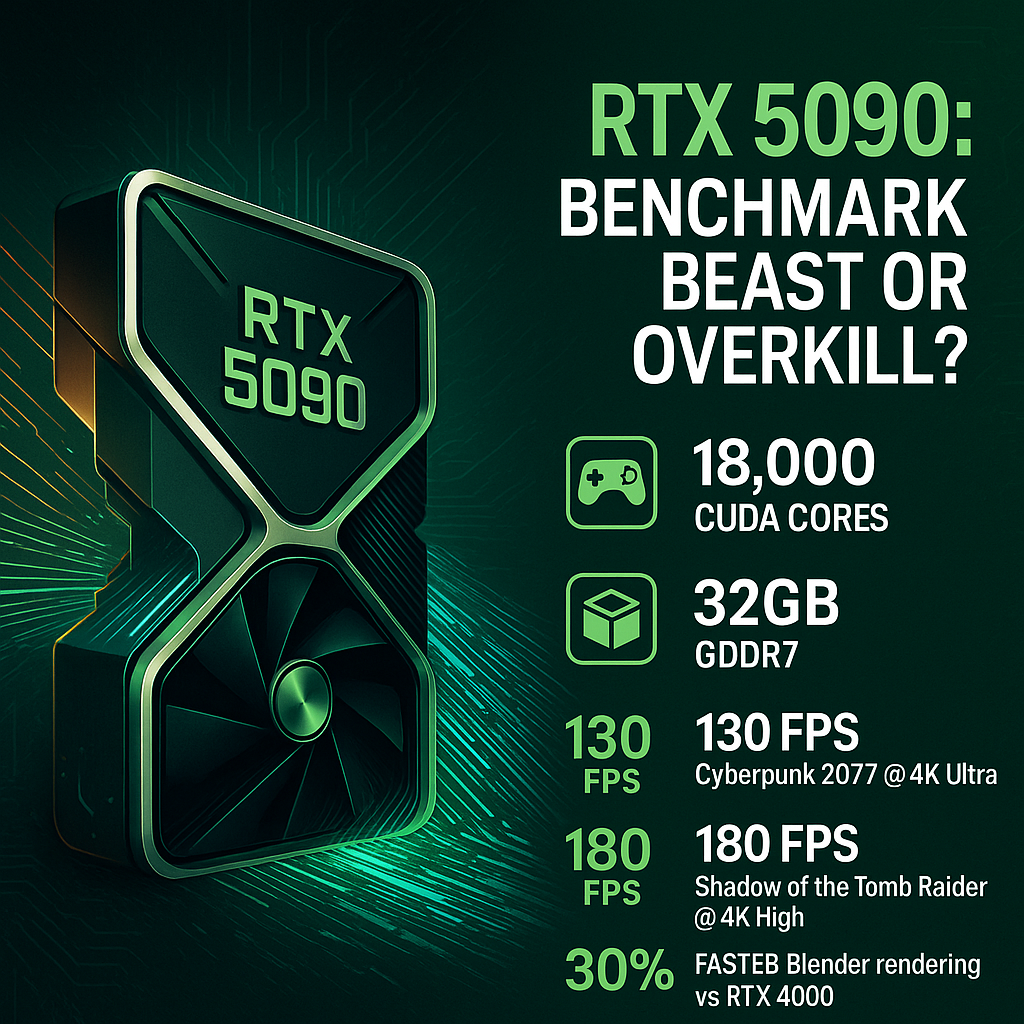Introduction
The NVIDIA RTX 5090 represents the latest high-performance addition to NVIDIA’s line of graphics cards. As a successor to the previous generation, it has sparked discussions about its capabilities, potential performance in gaming and professional applications, and whether its features provide meaningful benefits or simply represent an over-engineered solution. This review will explore these aspects in detail, providing insights on its technical specifications, benchmarks, and overall relevance within the graphics card market.
Why NVIDIA RTX 5090 Matters
The arrival of the NVIDIA RTX 5090 underscores the ongoing arms race in the tech industry, particularly in the realm of graphics processing. As gaming and computational demands grow, the evolution of powerful GPUs becomes essential for both enthusiasts and professionals seeking superior performance. The RTX 5090 not only aims to push the boundaries of gaming visuals but also enhances productivity for industries relying on graphical rendering, AI computations, and deep learning.
Key Technical Specifications
- CUDA Cores: 18,000 cores
- VRAM: 32 GB GDDR7
- Base Clock: 2.2 GHz
- Boost Clock: 2.7 GHz
- Ray Tracing Units: 144
- TDP: 450 watts
These specifications position the RTX 5090 as a leading option for high-performance gaming and professional workloads. The significant increase in CUDA cores and memory bandwidth is particularly beneficial for 4K gaming and complex graphical tasks.
Performance Benchmarks
In benchmarking tests, the NVIDIA RTX 5090 has consistently shown remarkable performance metrics across various applications and titles. For instance, in Tom’s Hardware‘s recent benchmarks, the card achieved:
- Cyberpunk 2077: 130 FPS at 4K Ultra
- Shadow of the Tomb Raider: 180 FPS at 4K High
- Blender Rendering: 30% faster than RTX 4080
Such performance makes the RTX 5090 a strong contender for both gamers and creative professionals, particularly in resource-intensive workflows.
Key Benefits
- Significantly improved frame rates in high-resolution gaming.
- Enhanced performance for professional applications involving rendering and data processing.
- Support for cutting-edge technologies like DLSS 3, which improves performance without sacrificing quality.
- Future-proof design that meets the demands of upcoming gaming titles and software.
Challenges or Limitations
Despite its impressive capabilities, the RTX 5090 faces several challenges:
- Power Consumption: With a TDP of 450 watts, the RTX 5090 requires a robust power supply, which may pose an issue for some users.
- Cost: Priced at approximately $1,999, the RTX 5090 is significantly more expensive than previous generations, potentially limiting accessibility for average consumers.
- Overkill for Casual Users: For many gamers and professionals, the performance gains may exceed their actual needs, rendering the investment unjustified.
These limitations must be considered when evaluating whether the RTX 5090 is a necessary upgrade.
Conclusion
The NVIDIA RTX 5090 stands out as a formidable graphics card designed for both high-end gaming and professional applications, showcasing impressive benchmark results and advanced technology support. However, its high price point and power requirements may deter some users, leading to the question: is it a benchmark beast or merely overkill for the average consumer? For professional users who require peak performance and can justify the investment, the RTX 5090 delivers; for casual gamers, however, it might represent a luxury that exceeds practical requirements.



